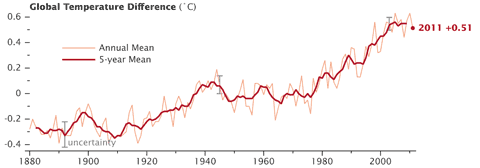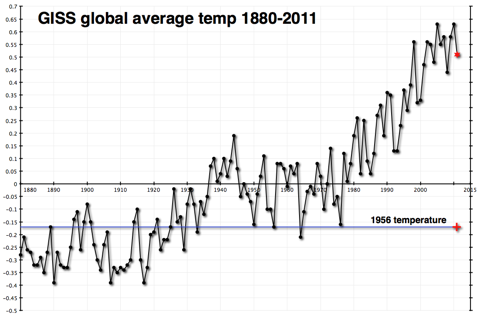 Something stirred inside the carefully cultivated cocoon of ignorance at Richard Treadgold’s Climate “Conversation” blog, but I don’t think it was the butterfly of understanding preparing to inflate its wings. Something much more subterranean, I suspect. Needled by my post about said cocoon (namely, Treadgold’s insistence that “global warming has not happened for about 15 years, unless you take a micrometer to the thermometer“), RT issues a bold challenge: Well, where’s your evidence, Renowden?
Something stirred inside the carefully cultivated cocoon of ignorance at Richard Treadgold’s Climate “Conversation” blog, but I don’t think it was the butterfly of understanding preparing to inflate its wings. Something much more subterranean, I suspect. Needled by my post about said cocoon (namely, Treadgold’s insistence that “global warming has not happened for about 15 years, unless you take a micrometer to the thermometer“), RT issues a bold challenge: Well, where’s your evidence, Renowden?
He heads his post with a graph lifted from JunkScience (that well known purveyor of same), showing the HadCRUT3 monthly temperature series from 1978 to date. Amusingly, Treadgold makes an error before he even begins the meat of his diatribe. The caption he provides to the graph includes this:
The graph that proves no significant warming for about 15 years – since about 1996. Measured by satellite, not the unreliable hand of man.
The HadCRUT3 global series is most assuredly not a satellite generated temperature record. But we’ll let that pass, shall we, and take a quick canter through an answer to his challenge. I shall ignore Mark Twain’s advice just this once, in the hope that some light may shine in to the dark corners of his misunderstanding.
Continue reading “Cuckoo cocoon (Prat Watch #5.5)”
Like this:
Like Loading...


 Something stirred inside the carefully cultivated cocoon of ignorance at Richard Treadgold’s Climate “Conversation” blog, but I don’t think it was the butterfly of understanding preparing to inflate its wings. Something much more subterranean, I suspect. Needled by
Something stirred inside the carefully cultivated cocoon of ignorance at Richard Treadgold’s Climate “Conversation” blog, but I don’t think it was the butterfly of understanding preparing to inflate its wings. Something much more subterranean, I suspect. Needled by 


